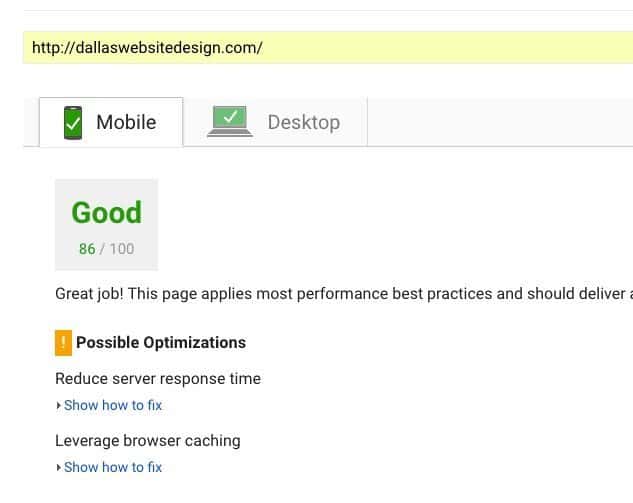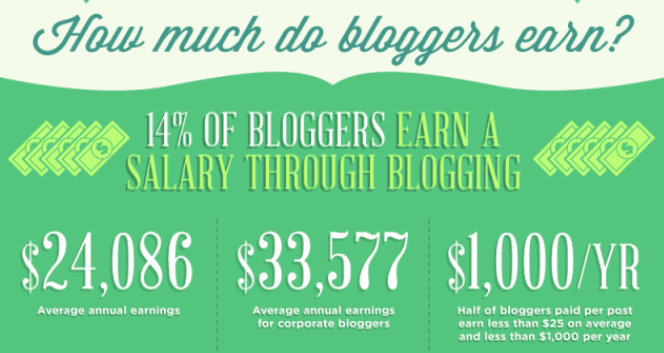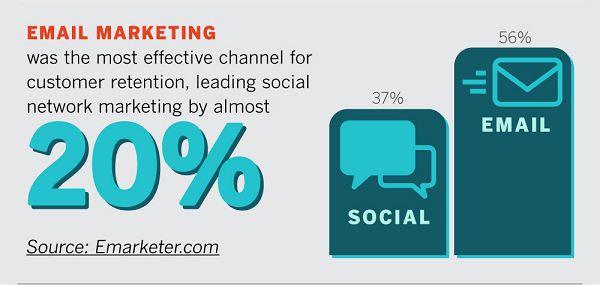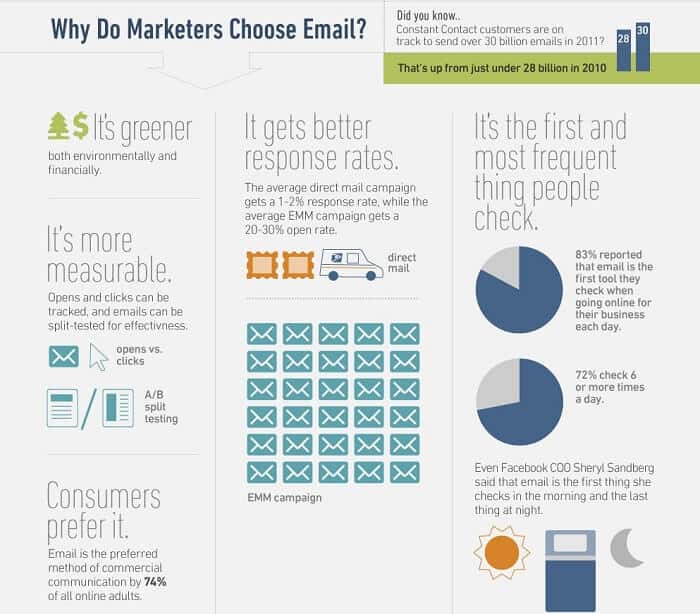No one works for free (well, at least most of us do not).
The Internet has become a ‘give and take’ relationship when it comes to creating website content and earning income from that time invested — monetizing a blog for many means placing ads on their article pages.
Unfortunately, there a great many dark sides to running a website based on ad revenue.
I want to start by breaking down the increasingly negative consequences of using ad networks as a primary monetization structure and follow that up with some better practices that can lead you to increased earnings.
The Dire Straights That Are Ad Networks
Ad networks are simple and easy.
Numerous WordPress plugins allow you to quickly, efficiently and strategically place ads on your website.
The benefit to using ad networks is that they are simple to use and allow you to focus on content creation.
Since ad networks such as Adsense operate by serving ads based on user demographics, you (the content creator) don’t have to concern yourself with targeting content around ad performance.
While some content creators may choose more competitive Adwords bidding niches, you do not need to break down micro-niches or gear content specifically to induce a click-funnel.
The Adsense approval process is relatively easy, unless you apply for an account using a website that doesn’t have much content.
I always recommend applying after the website has at least 20 articles of 600 words or more each) or you have a site that promotes banned content (I do not think I need to be specific here), you should not have any issues getting an active account. Hence; the appeal to place ads on your website is strong.
For years along with being an SEO Consultant, I ran websites that were primarily ad-based regarding revenue. Not only did I monetize using Adsense, but also native advertising platforms such as Taboola.
And I learned, over time, a few big lessons when it came to ad monetization (hint, these were not fun lessons to learn). So hopefully, after reading this article, you can avoid my past mistakes and make a bundle of cash. You may be thinking, how to monetize a blog without ads?
Ad Overload Kills Traffic Sources
I’m not going to go into how consumers feel about ads. Consumers are always going to cry foul whenever they experience even a fraction of inconvenience. Adsense and Taboola are relatively non-intrusive ad networks (though Taboola recently added a video pop, pending inventory, you can shut it off).
The big issue with having ads on your website is that your primary traffic sources hate them. Facebook and Google are moving towards their platforms (Google AMP and Facebook Instant Articles).
In both cases, these platforms speed up the website experience for the consumer by eliminating ads and embed codes. Facebook, of course, allows its ads on Instant Articles while Google, likewise, allows Adsense.
Facebook will notoriously lower reach on your website; the more aggressive your website is with displaying ads. And Google will not prioritize you in their search if your site presents ad farms. If you want an optimal website business experience that consists of SEO and Social juice, ads will serve to detrimentally affect you.
Sure, you can have ads on your site and still be a beloved Facebook website and rank high in the Google SERPS, but you have to keep your ad placements at modest levels regarding placement and volume. And this will inevitably truncate your revenue growth.
You will always be contorting your mental well-being attempting to balance ads for increased revenue with the unwritten rules of the primary traffic providers.
Many Ads Destroy User Browser Speeds
Put more than a couple of Adsense ads on your page, and you might be terrorizing some unsuspecting person’s computer. The fact is, many people don’t have computers capable of everything ads throw at their browsers, and this causes terrible user experiences.
Frozen browsers and people furiously hitting the back button to escape a new Lexus ad will cause your time on site to decrease, which harms a vital SEO metric.

Your website needs to be fast, like this
If you plan to go beyond Adsense and deploy more aggressive ad networks, expect increased bounce rates, lower time on the site stats, and super mean emails through your contact form accusing you of giving a person’s computer a virus. Yes, when someone’s browser freezes due to a heavy loading ad, they will think they have a virus), to all happen.
The problem here is, many people just ignore ads.
So you (the website owner) and the ad network end up in the lowly, scummy position of having to increase the aggressiveness of your ads to make a buck. It’s just the natural cycle of monetizing from ads at play.
Ad Revenue Based On RPM Can Lead To Mental Anguish
I will try to explain this in the best way possible. Many people do not want to send their traffic to affiliate programs because they do not want to worry with “conversion metrics.” I get it.
However, there is a far more nefarious side to website monetization than conversions, and that is called RPM. “RPM,” as you might have it, is simply “CPM,” which means cost per mille (technically, this means cost per thousand page views). Google Adsense uses RPM in their stats, leading many to get a little confused over the matter.
Ads seem like the easiest, least laborious solution because the network handles conversions…until they do not.

Plenty of room for blog monetization…..
When RPM drops, so does your revenue. If you get 10,000 page views per day and your $4 RPM (that’s $40 per day) drops to $1 (that’s $10 per day), you will be wishing you were tasked with only fixing affiliate sale conversions.
Your RPM will tank, don’t let initial fool’s gold cause you to buy a new car or else you might end up in debt.
RPM is based on what the ad network (typically Adsense) can get from Adwords buyers. It is up to the Adsense algorithm to place ads that yield the highest returns for the buyers who are bidding on placement on your website.
Increased clicks to ads will affect the ebbs and flows of RPM. Because you cannot contact Adsense and ask them why your RPM dumped, you get stuck going down the ad placement aesthetics rabbit hole.
You mostly try new ad types (for example, maybe you get mobile-geared ads from Adsense interface) or you move the ads to display at top or site or bottom or articles.
You do anything you can to try to save that RPM, but the thing is, there is no science involved at all. You are chasing your tail, spinning your wheels, in a zone of complete and utter time waste. Without actual evidence that proves why ad RPM fluctuates, you cannot diagnose or fix the issue in any logical way.

Crashing ad networks for publishers
I cannot tell you the great depths of time waste I have landed myself in during times of crappy RPM. It is frustrating at the highest of levels.
Lots of ad networks outside of Adsense will not be able to fill inventory. Doesn’t seem like a big deal, does it? Here’s what happens.
You get a contact form inquiry from Jeff. He says he can get you this record high RPM. This will triple your Adsense RPM! You start dreaming of buying that new summer grill.
But then comes the first day of largest internet advertising company deployment on your site. You went ahead and took down Adsense because, hey, you are heading to Richville. You go to your site, but you do not see the ad showing up. So you message Jeff.
Moreover, Jeff says, “yeah, it only displays when there is inventory sold.” Sure, that RPM is high, but you make anything barely because largest internet advertising company cannot sell enough inventory to display on your website.
Ad Blockers Kill Revenue
Oh, the final nail in the coffin when it comes to using ad networks….ad blockers. Email marketing statistics show 615 million devices and 11 percent of all web users are now blocking ads, according to PageFair, a company that focuses on “unblocking” ads.
Ad blockers are the death nail unless Facebook or Google do something about them, which doesn’t look promising on either front. As ad blocker use grows on smartphones and laptops, ad revenue on the web continues to sink.

Without Ads, How Do I Monetize My Blog
I suppose you thought that final nail in the coffin was the end of your website business.
Well, don’t go filling out that Sunglass Hut job application just yet, there is still hope left. In fact, getting away from ads is going to be the best darn thing you ever did do.

Ads are a poor man’s monetization set up. They are the easy way out. With a little more understanding of metrics and web theory, you can make a heck of a lot more income without ads.
While you were a slave to RPM with the ad networks, now you are in a position to absorb super high affiliate payouts. This means you will need only a few sales (maybe even just one, depending on the offer) to make significant money. It also means lower traffic days will not harm you like they when your site only displayed ads.
The End Of Ad Enslavement from Online Ad Services
Once ads are gone, or severely limited, your website’s speed is going to accelerate. A faster site means more traffic from both Google search and Facebook.
Both of these traffic sources can sense a slow loading website, and they will deem it a poor user experience and penalize you.

Traffic is money. More traffic can be more money. The faster loading site is going to open up way more options for increased revenue than ever before.
I always encourage website owners who predominately use ads to put their site on Google Pagespeed and mark down the results. Next, turn the ads all off and clear the cache. Perform the test again. You will likely be astounded by the severe difference in website load time.
Start Collecting Emails From Your Blog Immediately

email is one of the best ways to monetize a blog
Remember when people thought the email business was dead? Well, they were wrong. Google’s GMAIL changed the game by creating intelligently built filing systems, such as PROMOTIONS and UPDATES.
This resulted in people seeing and opening offers.
People enjoy getting offers that are relevant to their likes. And guess what? If they are reading your Pizza Review website, they probably like to receive pizza offers. So collect their email by email capture software such as MailChimp and AWeber.
Both make this process super easy.

Now that you do not have ads, the email marketing collection box from one of your blog tools will stand out, and it will not affect load time nearly as bad as that Adsense pharmaceutical ad did.
If you want the best email marketing strategy, give an eBook away. Don’t have time to write an eBook? Search for places that will sell you the rights to their ready to go ebooks.
Once you start collecting emails, you can send them relevant content alongside fresh offers.
People who sign up for emails on your website will recognize your brand as a place they enjoy hearing from. Your suggestions (affiliate offers) will be well-received.

“Collecting emails changed our entire business structure. We used to have an Adsense ad at the top of our site. But as soon as we swapped it out for email marketing, we began going down a much more profitable revenue stream,” Jesse Carlson, who promotes his best survival knives list using emails he’s collected from Facebook shares, told SEO Expert Brad.
“Now we build connections with users who are interested in our products and content. Before, we were chasing our tails, always ‘fixing ads’ and worrying about RPM.”
Create Product Reviews
Find affiliate programs that host products that are relevant to your content.
Sticking with the pizza website theme, you might look for pizza cookbook offers or even more expensive recipe offers (think Italian food). Create content that reviews that particular offer.
Remember, the consumer trust your brand. And without ads popping up all over the page, they trust you even more. You now have the power of influence and can steer consumers towards offers that you approve of.
TIP: Be aware of your newfound great power and don’t abuse it. If you recommend crappy or scammy products, you will begin to lose business. Performing due diligence on offers before promoting them is always wise.
Coordinate Affiliate Offers With Relevant Content to Monetize Your Blog
Remember when the ad network used to decide what ads people viewed when reading or watching your content?
Well, now that is your job. And honestly, it is not so bad. Create a spreadsheet of offers and categorize them. You can easily snag an offer from your sheet and insert it into related content.
Additionally, many WordPress ad display plugins will allow you to assign ads to specific categories so you can update the site universally, so each ad shows with the appropriate content.

See, You Are Ready To Monetize a Blog With Emails
Switching from an ad-based monetization system was a tough initial change for me. I felt much like a fish out of water focusing on email collection.
But it did not take too long for me to begin experiencing the obvious benefits of increased revenue and more marketing control. And I am confident you will experience the same results with a little more effort.




